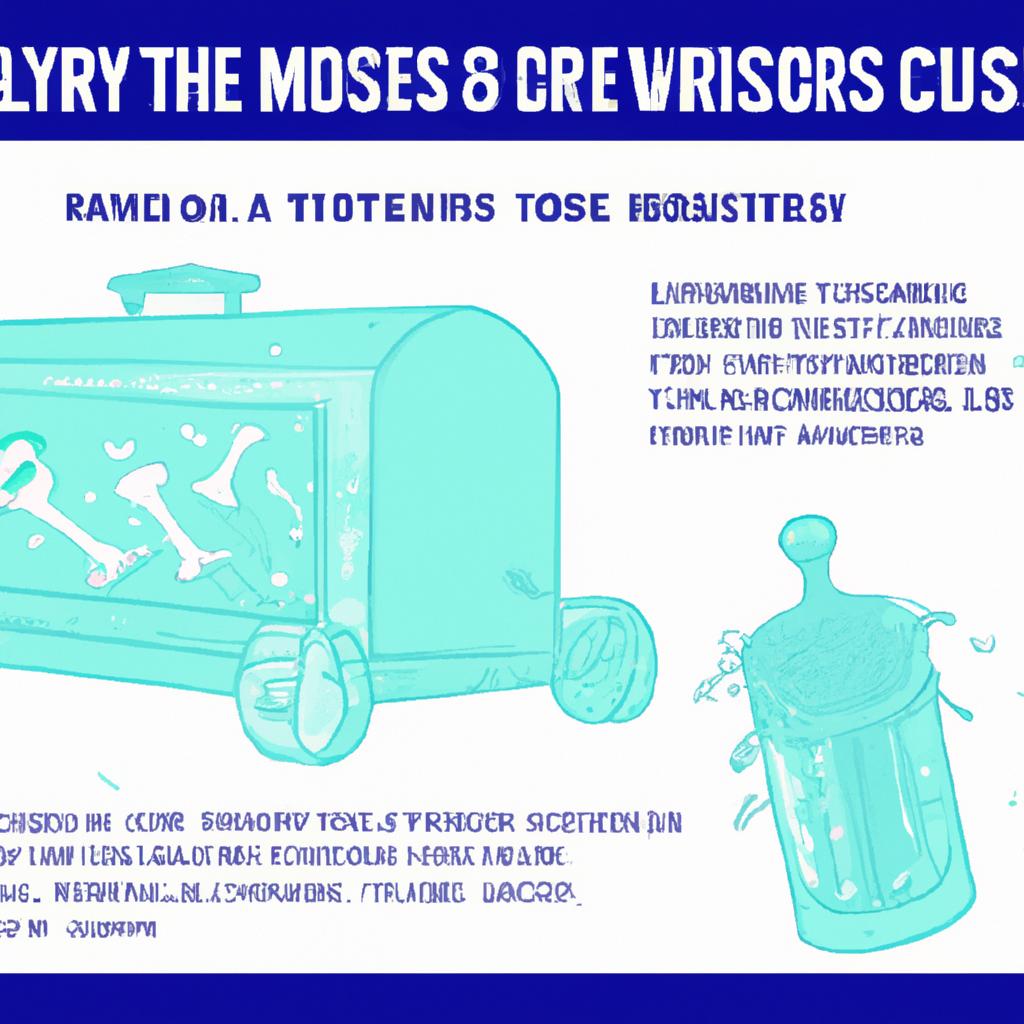In the realm of urban legends and scientific speculation, the purported cryogenic preservation of Walt Disney’s body remains a topic of intrigue and debate. As experts in estate planning and probate law, the Morgan Legal Group aims to unravel the mysteries surrounding this enigmatic tale, examining the legal implications and practical considerations of such a controversial endeavor. Join us as we delve into the curious case of Walt Disney cryogenics and explore the legal complexities that may arise in the intersection of science, myth, and estate planning.
The Myth of Walt Disney’s Cryogenics Preservation
There has been a long-standing myth surrounding Walt Disney and the idea that he had his body cryogenically preserved after his death. Despite these rumors, there is actually no truth to this story. The notion of Walt Disney being frozen in hopes of being revived in the future is purely a work of fiction and has no basis in reality.
It is important to dispel this myth and focus on the legacy that Walt Disney left behind through his groundbreaking work in animation and entertainment. The false claims of cryogenics only serve to overshadow the real accomplishments of a visionary creative genius. Let us remember Walt Disney for his contributions to the world of storytelling and imagination, rather than perpetuating unfounded rumors.

Examining the Legal and Ethical Implications
It is well-known that there have been longstanding rumors surrounding the cryogenics of Walt Disney. While these rumors have been widely circulated, it is important to examine the legal and ethical implications of such a practice. From a legal standpoint, the act of cryogenically freezing a deceased individual raises questions about consent, property rights, and the laws surrounding the disposition of remains.
From an ethical perspective, the practice of cryogenics raises concerns about the potential exploitation of vulnerable individuals and the commodification of death. Additionally, there are questions about the implications of potentially bringing someone back to life in the future and the impact this could have on society as a whole. As legal and ethical professionals, it is essential that we carefully consider these implications and work towards establishing guidelines and regulations to ensure that the rights and dignity of individuals are respected in matters relating to cryogenics.

Dispelling Common Misconceptions Surrounding the Topic
One common misconception surrounding the topic of Walt Disney and cryogenics is that the legendary animator and entrepreneur had his body frozen after his death. Despite popular myths and urban legends, there is no concrete evidence to support the claim that Disney’s body was cryogenically preserved. In fact, the Walt Disney Company has repeatedly denied these rumors and stated that Disney was cremated and his ashes interred at Forest Lawn Memorial Park in Glendale, California.
Another misconception is that Walt Disney had plans to be resurrected in the future through cryonics technology. This idea has been perpetuated by various conspiracy theories and sensationalist media outlets. However, there is no credible information to suggest that Disney had any such intentions or beliefs. It is important to separate fact from fiction when discussing sensitive topics like cryogenics, especially when it involves a beloved public figure like Walt Disney.
Recommendations for Proper Estate Planning when Considering Cryonics
If you are considering cryonics as part of your estate planning, it is crucial to take several key factors into consideration. Proper estate planning is essential to ensure that your wishes are carried out effectively, especially when it comes to such a unique and complex process like cryogenics.
Here are some recommendations to keep in mind when incorporating cryonics into your estate plan:
- Consult with a specialized attorney: Seek guidance from a legal professional experienced in estate planning for cryonics to ensure that all legal aspects are properly addressed.
- Include specific provisions in your Will or trust: Clearly outline your wishes regarding cryonics, including how funds should be allocated for the process and any instructions for your care upon revival.
- Designate a trusted individual as a healthcare proxy: Choose someone who understands and supports your decision for cryonics to make medical decisions on your behalf if needed.
Q&A
Q: What is cryogenics and how does it relate to Walt Disney?
A: Cryogenics is the scientific study of the production and behavior of materials at very low temperatures. In the case of Walt Disney, there have been rumors and myths circulating for years that he was cryogenically frozen after his death in 1966.
Q: Is there any truth to the rumor that Walt Disney was cryogenically frozen?
A: There is no concrete evidence to support the claim that Walt Disney was cryogenically frozen. The rumor likely originated from the fact that Walt Disney expressed interest in cryonics before his death, but there is no proof that he actually went through with the process.
Q: Why do people believe that Walt Disney was cryogenically frozen?
A: The theory that Walt Disney was cryogenically frozen has persisted due to his fascination with futuristic technology and the fact that he was interested in cryonics. Additionally, the secrecy surrounding his death and burial location has fueled speculation about what actually happened to his remains.
Q: What is the truth behind Walt Disney’s death and burial?
A: Walt Disney died on December 15, 1966, from complications of lung cancer. He was cremated and his ashes were interred at Forest Lawn Memorial Park in Glendale, California.
Q: Why do you think the myth of Walt Disney being cryogenically frozen continues to be popular?
A: The myth of Walt Disney being cryogenically frozen continues to be popular because it plays into the idea of him being a visionary and larger-than-life figure. Additionally, the mystery and intrigue surrounding his death have allowed the myth to persist over the years.
In Summary
In conclusion, the rumors surrounding Walt Disney’s cryogenics may continue to spark curiosity and intrigue for years to come. Whether or not there is any truth to the speculation, one thing remains certain – Walt Disney’s legacy as a visionary and pioneer in the world of entertainment will continue to inspire generations to come. The mystery of his walt disney really frozen”>alleged cryogenic preservation only adds to the mystique of a man whose impact on the world will never be forgotten. Perhaps, in the end, it is fitting that the man who brought so much magic to our lives would leave us with one final enigma to ponder.
 Walt Disney Cryogenics: Exploring the Intriguing Legend of Disney’s Frozen Body
Walt Disney Cryogenics: Exploring the Intriguing Legend of Disney’s Frozen Body
If you’re a fan of Walt Disney and his magical world of cartoons and imagination, you may have heard the rumor that the iconic figure was cryogenically frozen after his death in 1966. While many believe this to be true, there is no concrete evidence to support this claim. In this article, we’ll dive into the history and science behind cryogenics, and uncover the truth behind the myth of Walt Disney’s frozen body.
What is Cryogenics?
Cryogenics is a branch of science focused on the production and effects of extreme cold temperatures on materials and living organisms. The word “cryogenics” comes from the Greek word “kryos”, meaning frozen, and “genics”, meaning to produce. It involves the use of very low temperatures, usually below -150 degrees Celsius, to preserve and study materials and organisms.
The Science of Cryonics
Cryogenics and cryonics are often confused, but they are distinct terms. While cryogenics is a scientific field focused on extreme cold temperatures, cryonics is the preservation of deceased humans or animals with the hope of reviving them in the future. Cryonic preservation involves cooling the body to -196 degrees Celsius and storing it in liquid nitrogen, which prevents any further biological processes.
Cryonics, however, is still largely considered to be a pseudoscience due to the lack of evidence and success in reviving preserved bodies. According to the Cryonics Institute, there are currently 197 cryopreserved bodies in the United States, with about 1000 individuals signed up to be cryopreserved in the future.
Walt Disney and Cryogenics: The Myth
The legend of Walt Disney being cryogenically frozen after his death began shortly after his passing in 1966. The story goes that Disney was fascinated by the idea of cryonics and wanted to be preserved in hopes of being revived in the future when technology had advanced enough. However, there is no evidence to support this claim.
According to Bob Nelson, the first president of Cryonics Society of California, the story of Disney’s cryogenic preservation was started as a hoax by a journalist. The journalist had attended a conference where Nelson spoke about cryogenics and decided to add a little sensationalism to the story by mentioning Disney’s name.
In fact, Walt Disney was cremated and his ashes are interred at the Forest Lawn Memorial Park in Glendale, California. His family has also confirmed that there was no truth to the claim of his cryogenic preservation.
The Misconceptions and Controversies Surrounding Cryonics
Cryonics is a topic that often sparks debates and controversies, as many view it as a way to cheat death or a waste of resources. However, those who support cryonic preservation believe it is a way to give individuals a chance at a second life in the future.
One of the biggest misconceptions about cryonics is that it is a way to bring people back to life. In reality, cryonics only preserves the body in hopes that future technology will be able to revive it. It does not guarantee a person’s consciousness or memories will be retained.
Another controversy surrounding cryonics is the high cost associated with it. The process can cost upwards of $200,000, which is often seen as a luxury for the wealthy and unattainable for the average person. Additionally, there is no guarantee of success, which can lead to a sense of false hope for those who choose cryonics as an end-of-life option.
Benefits and Practical Tips
While cryonics may still be a controversial and unproven concept, it has paved the way for the advancement of cryobiology and cryogenic research. These fields have contributed to the development of technologies such as tissue preservation and vitrification (the conversion of tissue into glass-like state), which have been used in various medical and scientific applications.
For those interested in cryonics, here are a few practical tips to consider:
– Do your research: Before making any decisions, it is important to understand the science and history behind cryonics. This will help you make an informed decision about whether it is the right choice for you.
– Plan ahead: If you are considering cryonics, it is essential to make arrangements and plan ahead. This includes contacting a cryonics facility, discussing the procedure and costs, and making financial arrangements.
– Keep an open mind: While cryonics may still be considered a pseudoscience, advancements in technology and research may change this perception in the future. It is important to keep an open mind and stay informed about any developments in the field.
In conclusion, the story of Walt Disney’s cryogenic preservation is just that – a story. There is no substantial evidence to support this claim, and it remains a myth in the world of cryonics. However, the science behind cryogenics and cryonics continues to evolve and push the boundaries of what we know about preserving life. Who knows, maybe one day, cryonics will become a reality and individuals will have the chance to be revived in the future. Until then, the myth of Walt Disney’s frozen body will continue to intrigue and captivate our imagination.


